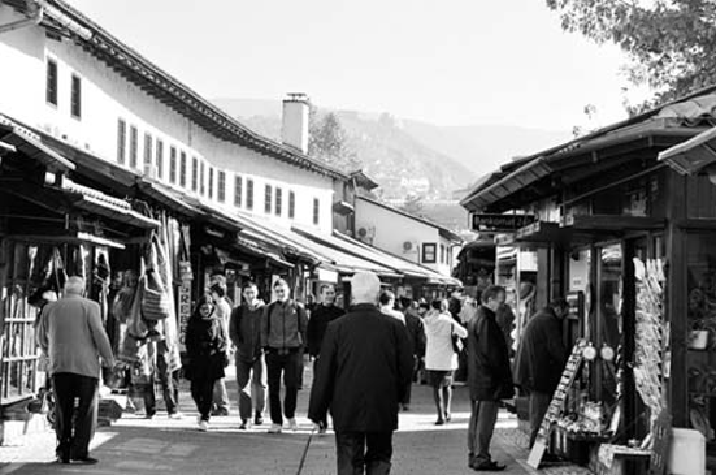Travel Reference
In-Depth Information
• Across from the mosque's gate, walk down the main street through town.
Sara
č
i Street:
Lined with shops, more
ć
evapi
joints, tempting desserts (for some Bosni-
Like so many streets in the Baš
č
aršija, this is named for a type of craftsman who worked
here—in this case, “Leathermakers.” After a short block, on the left, is the
TI.
Across the
street is the lane called
Prote Bakovi
ć
a,
crammed with characteristic (if touristy) eateries.
Bakovi
ć
a also leads to the
Old Serbian Orthodox Church,
well worth a visit (described
later). None of the four Serbian Orthodox Churches in Sarajevo was vandalized during the
siege, though they were all damaged by shrapnel launched at nearby targets by the Bosnian
Serb Army.
Just beyond the TI, on the right (at #77), dip into the courtyard of the
Mori
ć
a Han,
an
old Ottoman caravanserai—like an inn, where passing merchants could find food and ac-
commodations. Itservesasimilar purposetoday,withseveralatmospheric cafétablesoffer-
here now if you need to get caffeinated for all the sightseeing coming up).
Afewshortblocksfartheralong,ontheleft,you'llseethewalledcourtyardofSarajevo's
top mosque, the
Gazi Husrev-Bey Mosque
—definitely worth a visit, and described later.
This is just the first of many mentions you'll see of Gazi Husrev-Bey (1480-1541), a

